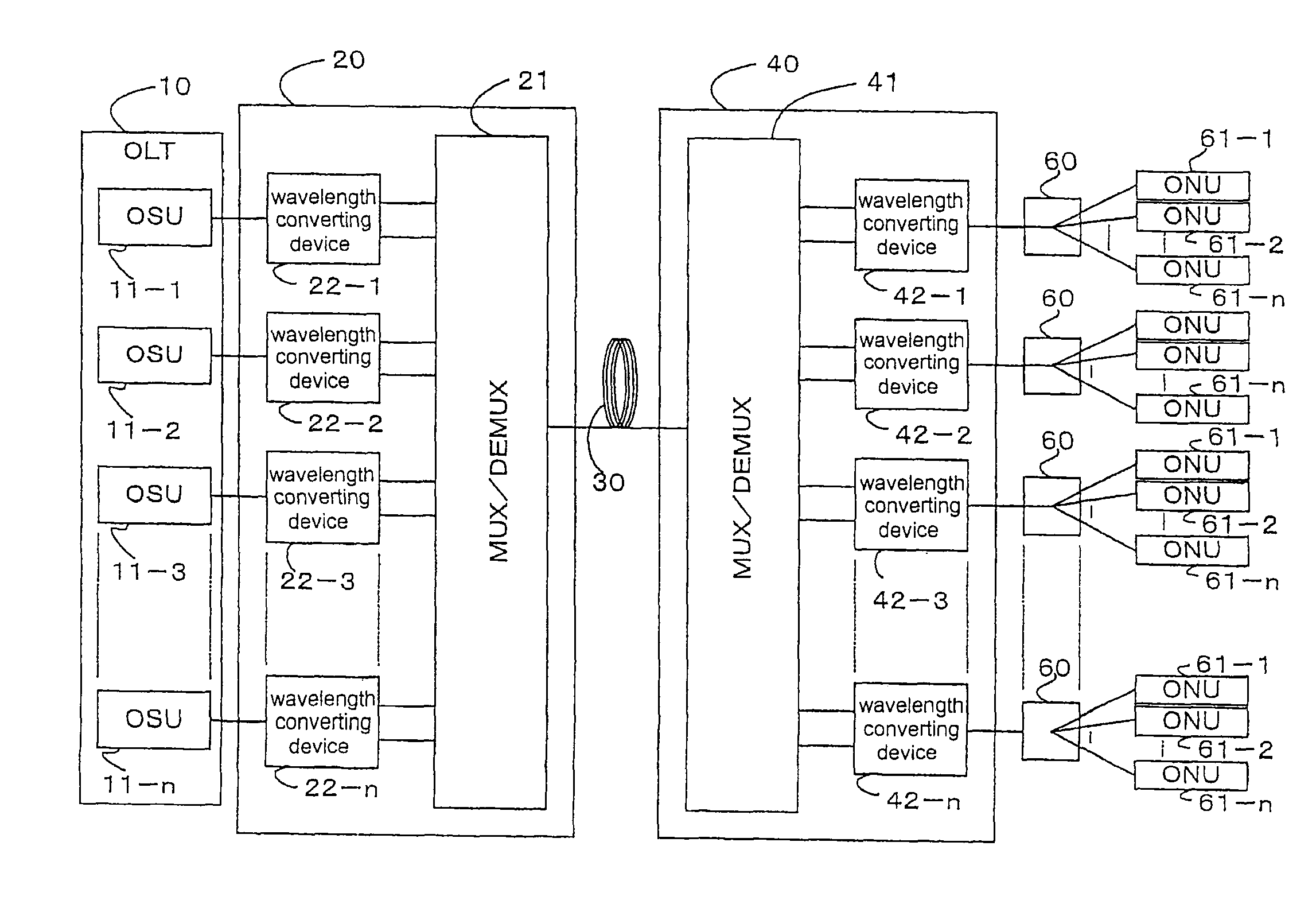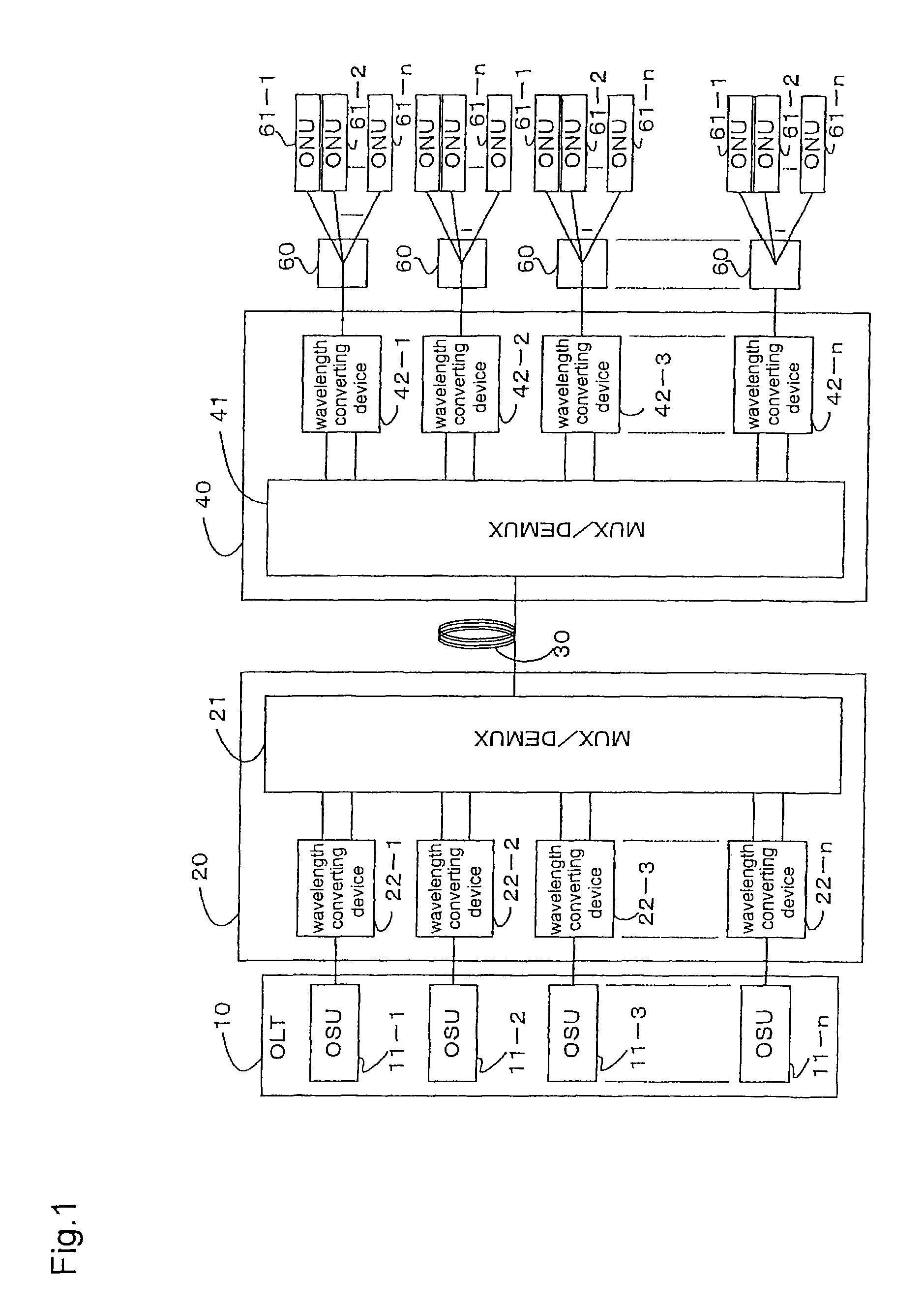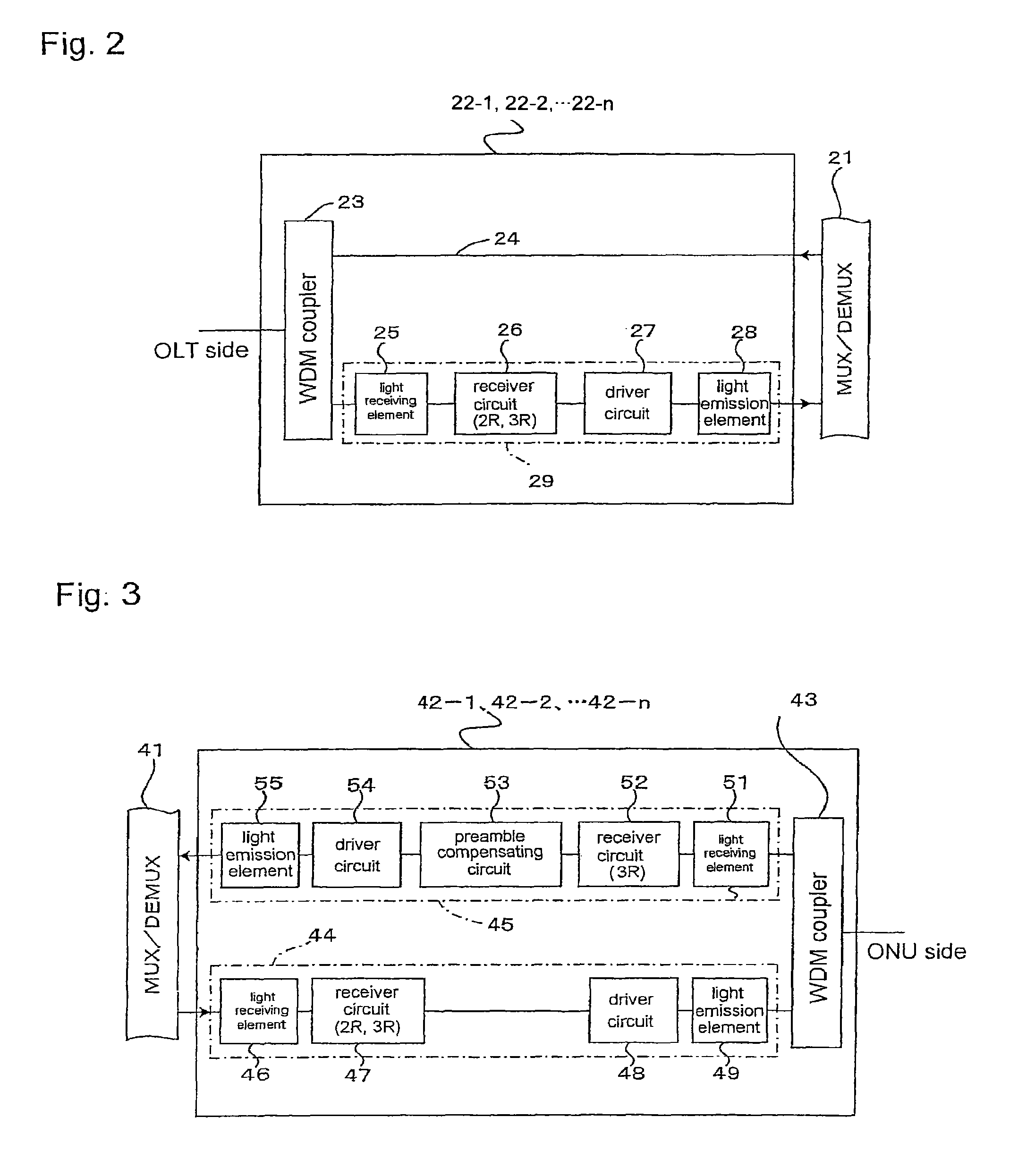Optical transmission system
a transmission system and optical repeater technology, applied in the field of optical repeater devices, can solve the problems of inability to transmit signals to the same olt, inability to maintain transmission throughput, and large time and cost of exchanging an existing olt, so as to reduce the cost of system change and maintain transmission throughput without decreasing
- Summary
- Abstract
- Description
- Claims
- Application Information
AI Technical Summary
Benefits of technology
Problems solved by technology
Method used
Image
Examples
first embodiment
[0094]The First Embodiment
[0095]FIG. 1 is a diagram showing a configuration of a PDS type optical transmission system regarding the first embodiment of the present invention.
[0096]In FIG. 1, optical subscriber units (OSUs) 11-1, 11-2 to 11-n provided inside a center side optical line terminal (OLT) 10 compliant with such as the G-PON, the GE-PON, or the like, are connected with a plurality of user side optical network units (ONUs) 61-1, 61-2, to 61-n respectively, via a central office side optical repeater device (ORD) 20, an optical transmission path 30, a user side ORD 40, and an optical coupler (a splitter) 60. Moreover, any one of such the ONUs 61-1, 61-2, to 61-n comprises a configuration compliant with the G-PON, the GE-PON, or the like.
[0097]Moreover, the central office side ORD 20 comprises wavelength converting devices 22-1, 22-2, 22-n to be connected with each OSU 11-1, 11-2, 11-n respectively, and a multiplexer / de-multiplexer (MUX / DEMUX) 21 to be connected with such the w...
second embodiment
[0146]The Second Embodiment
[0147]FIG. 7 is a circuit block diagram showing a wavelength converting device to be comprised of a user side ORD used for a PDS type optical transmission system regarding the second embodiment of the present invention, wherein a symbol similar to that in FIG. 3 shows the similar element.
[0148]That is to say, FIG. 7 shows a configuration of any one of the wavelength converting devices 42-1, 42-2 to 32-n in the user side ORD 40 used for the optical transmission system shown in FIG. 1. As different from FIG. 3, it comprises a configuration that there is no preamble compensating circuit 53 in the up transmission system circuit 45a.
[0149]Hence, a preamble signal included in a upward burst signal output from any one of the ONUs 61-1, 61-2 to 61-n is not to be compensated. Moreover, without converting the burst signal into a continuous signal, the signal is to be processed for the 2R or the 3R in the receiver circuit 52.
[0150]Such the wavelength converting devi...
third embodiment
[0152]The Third Embodiment
[0153]FIG. 8 is a circuit block diagram showing an ORD to be connected with an optical transmission path for a burst signal including a preamble signal in such as an optical transmission system regarding the third embodiment of the present invention, wherein a symbol similar to that in FIG. 3 shows the similar element.
[0154]In FIG. 8, an optical repeater device (ORD) 42 comprises the similar configuration to the up transmission system circuit 45 in any one of the wavelength converting devices 42-1, 42-2 to 42-n provided in the user side ORD 40 in FIG. 1. That is to say, it comprises the configuration that, the light receiving element 51, the receiver circuit 52, the preamble compensating circuit 53, the driver circuit 54 and the light emission element 55 are connected in order toward the optical signal transmission direction therebetween.
[0155]Such the ORD 42 is not limited to be used as the user side ORD 40 shown in FIG. 1. And, with compensating a disappe...
PUM
 Login to View More
Login to View More Abstract
Description
Claims
Application Information
 Login to View More
Login to View More - R&D
- Intellectual Property
- Life Sciences
- Materials
- Tech Scout
- Unparalleled Data Quality
- Higher Quality Content
- 60% Fewer Hallucinations
Browse by: Latest US Patents, China's latest patents, Technical Efficacy Thesaurus, Application Domain, Technology Topic, Popular Technical Reports.
© 2025 PatSnap. All rights reserved.Legal|Privacy policy|Modern Slavery Act Transparency Statement|Sitemap|About US| Contact US: help@patsnap.com



